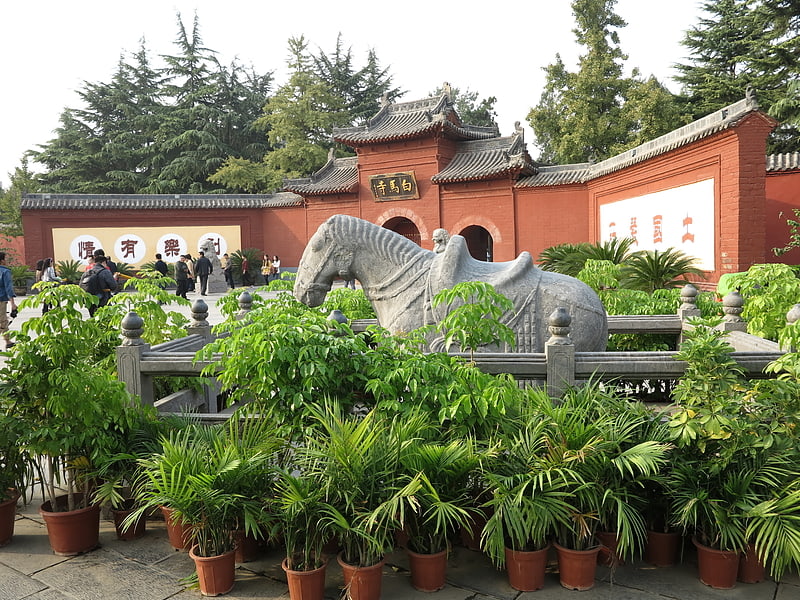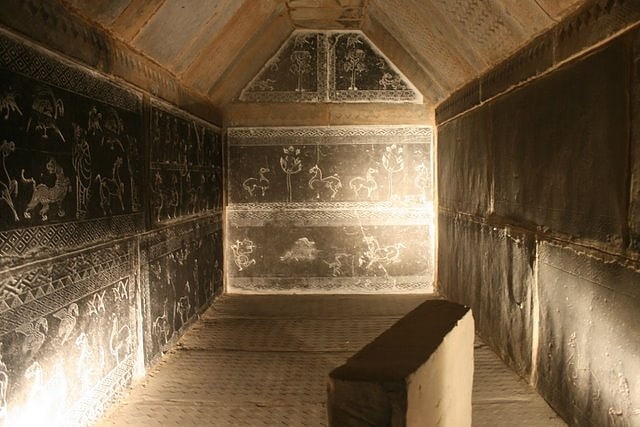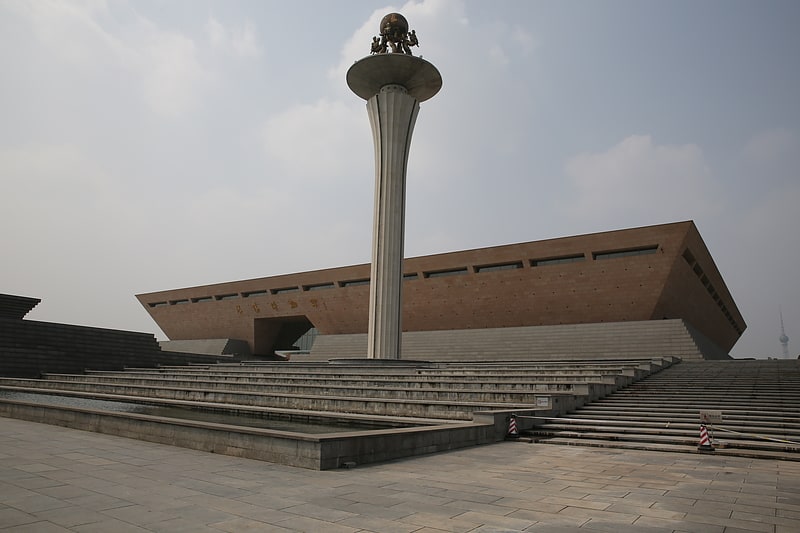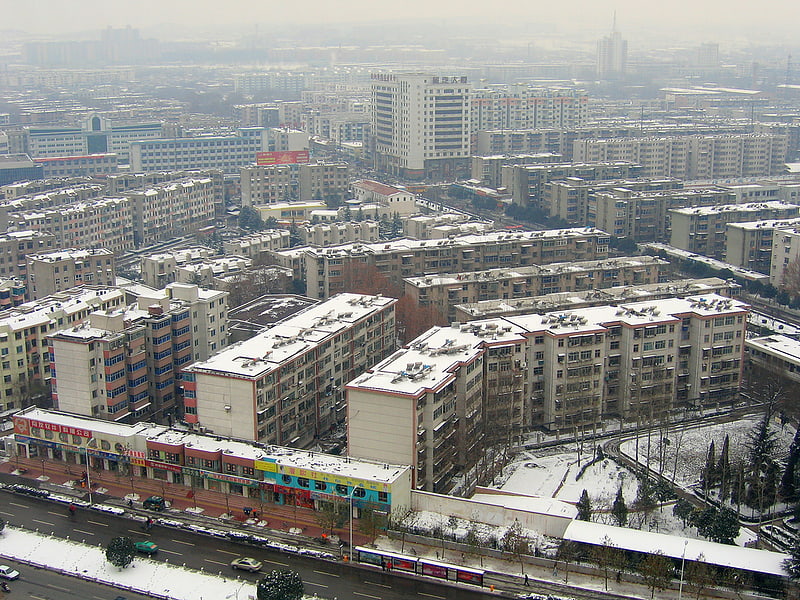Discover 5 hidden attractions, cool sights, and unusual things to do in Luoyang (China). Don't miss out on these must-see attractions: White Horse Temple, Longmen National Park, and Luoyang Ancient Tombs Museum. Also, be sure to include Luoyang Museum in your itinerary.
Below, you can find the list of the most amazing places you should visit in Luoyang (Henan).
Table of Contents
White Horse Temple

Also known as: 白马寺
Temple in Luoyang, China. White Horse Temple is a Buddhist temple in Luoyang, Henan that, according to tradition, is the first Buddhist temple in China, having been first established in 68 AD under the patronage of Emperor Ming in the Eastern Han dynasty.
The site is just outside the walls of the ancient Eastern Han capital, some 12–13 kilometres (7.5–8.1 mi) east of Luoyang in Henan Province. It is approximately 40 minutes by bus No. 56 from Luoyang railway station. The temple, although small in comparison to many others in China, is considered by most believers as "the cradle of Chinese Buddhism". The geographical landmarks to the south are Manghan mountain and Lucoche River.
The main temple buildings, a large complex, were reconstructed during the Ming (1368 to 1644) and Qing (1644 to 1912) dynasties. They were refurbished in the 1950s, and again in March 1973 after the Cultural Revolution. It has numerous halls divided by courtyards and manicured gardens, covering an area of about 13 hectares (32 acres). The display plaques in Chinese and English give ample descriptions of the Buddhist deities installed in the halls. Significant statues include Śākyamuni Buddha, Maitreya (the laughing Buddha in China), Amitābha, the Jade Buddha, Bodhisattvas such as Guanyin, and arhats and stone statues of the two white horses which brought the Indian monks to China and two mythical lions at the entrance. Under international funding, the temple has undergone many changes, both structurally and internally. The most recent cooperative project, with India, was completed in 2008 when the Sanchi Stupa and the Sarnath Buddha statue were erected.[1]
Longmen National Park

Also known as: 龙门石窟
UNESCO–listed cliff cave carvings site. The Longmen Grottoes or Longmen Caves are some of the finest examples of Chinese Buddhist art. Housing tens of thousands of statues of Shakyamuni Buddha and his disciples, they are located 12 kilometres south of present-day Luoyang in Henan province, China. The images, many once painted, were carved as outside rock reliefs and inside artificial caves excavated from the limestone cliffs of the Xiangshan and Longmenshan, running east and west. The Yi River flows northward between them and the area used to be called Yique. The alternative name of "Dragon's Gate Grottoes" derives from the resemblance of the two hills that check the flow of the Yi River to the typical "Chinese gate towers" that once marked the entrance to Luoyang from the south. There are as many as 100,000 statues within the 2,345 caves, ranging from 1 inch to 57 feet in height. The area also contains nearly 2,500 stelae and inscriptions, hence the name “Forest of Ancient Stelae", as well as over sixty Buddhist pagodas. Situated in a scenic natural environment, the caves were dug from a 1 kilometre stretch of cliff running along both banks of the river. 30% date from the Northern Wei and 60% from the Tang dynasty, caves from other periods accounting for less than 10% of the total. Starting with the Northern Wei Dynasty in 493 AD, patrons and donors included emperors, Wu Zetian, members of the royal family, other rich families, generals, and religious groups.
In 2000 the site was added to the UNESCO World Heritage List as “an outstanding manifestation of human artistic creativity,” for its perfection of an art form, and for its encapsulation of the cultural sophistication of Tang China.[2]
Luoyang Ancient Tombs Museum

Museum in Luoyang, China. Luoyang Ancient Tombs Museum is a museum presenting Chinese ancient tombs in Luoyang, in the Henan province of China.
The Museum was established in 1984 and opened to the public in 1987. It is located on Mang Hill (邙山; pinyin: Mangshan), in the eastern side of Zhongtou Village, about 10 km (6.2 mi) north of Luoyang City. The site occupies 3 hectares. Mangshan, where the museum is located, is a hill about 300m above sea level that was historically a burial ground.[3]
Luoyang Museum

Also known as: 洛阳博物馆
Museum in Luoyang, China. Luoyang Museum is a historical museum in Luoyang, Henan Province, China. Situated in the Yellow River valley. It offers exhibits of the rich cultural heritage of Luoyang, a major Chinese cultural centre, which was the capital of numerous Chinese dynasties including the Eastern Zhou and the Eastern Han.
The museum was first built in 1958, in Guanlin, seven kilometres (4.3 mi) south of Luoyang City. It was moved to the north side of Zhongzhou Road in 1973 near the Wangcheng Park, which, at an area of 67 hectares (170 acres), is the largest public park in Luoyang. The new museum opened on May 1, 1974. It houses relics from excavation sites on the outskirts of Luoyang, in the city's old section. They include antiquaries from palaces and temples. These artifacts establish the historical past of Luoyang, representing elements of the ancient city of nine capitals, from Neolithic times up to 937 AD.[4]
Chanhe Hui District

Also known as: 瀍河回族区
Chanhe Hui District is a district of the city of Luoyang, Henan province, China.[5]